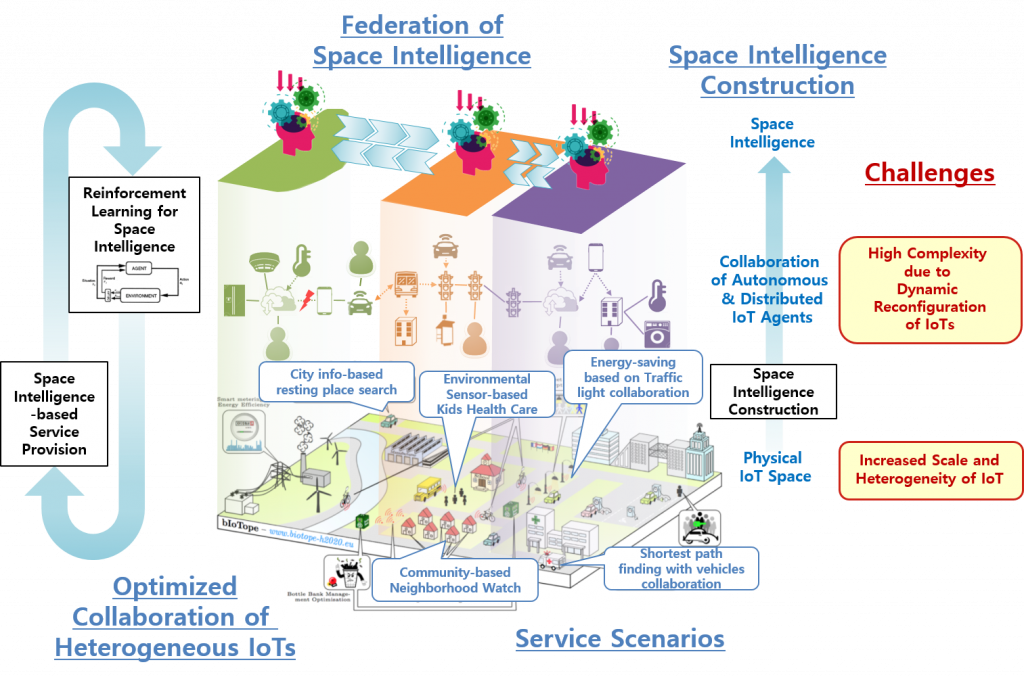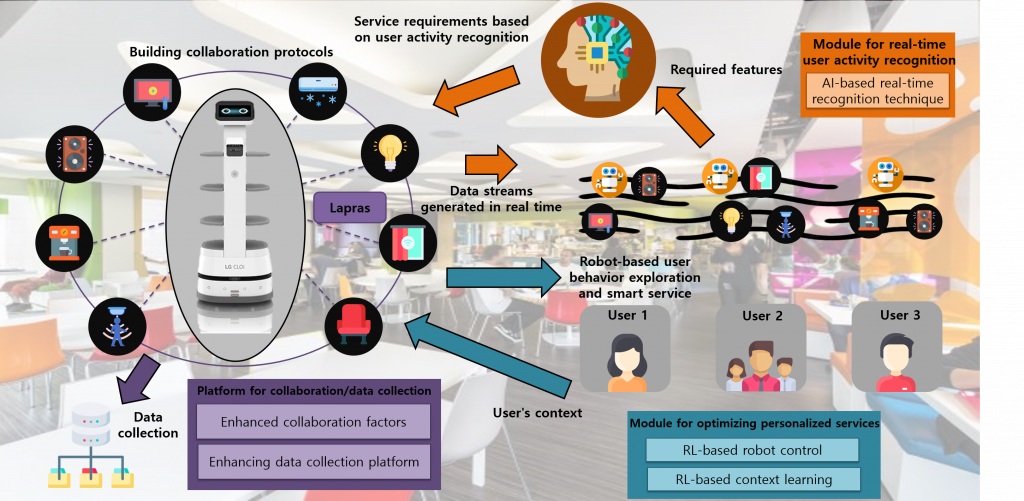Space Intelligence Evolution with Autonomic Preference Learning

Space intelligence-based services that provide effective and efficient lifestyle by autonomous IoT devices :
- Self-learning Space Intelligence is an artificial intelligence system that independently learns and evolves within a specific space. A system continuously learns from the data collected by Internet of Things (IoT) devices within the space, thereby providing more sophisticated and efficient services. The key elements of such a space intelligence system include:
- Self-Learning Algorithms: The space intelligence system uses self-learning algorithms, such as deep learning, to continually analyze and learn from data. Over time, these algorithms learn user behavior patterns, environmental changes, and interactions within the space, continuously improving the system’s performance.
- Environmental Awareness and Situation Recognition: The space intelligence system accurately assesses its environment by collecting information from various sensors within the space. It understands and responds to physical conditions, user location, and activity status in real-time.
- Prediction and Personalized Services: Through self-learning, the system can predict users’ needs and preferences, providing customized services. For example, a smart home system might learn a user’s lifestyle patterns and automatically adjust lighting, temperature, and music contents.
- Dynamic Network Formation and Collaboration: IoT devices within the space interact and collaborate to provide more effective services. For instance, security cameras, door locks, and lighting systems could share information to enhance security.
- User Interface and Interaction: Space intelligence systems use user-friendly interfaces, such as voice and gesture recognition, for effective user interaction. This allows users to operate the system more easily and naturally.
- Sustainability and Energy Efficiency: The system operates sustainably through energy-efficient learning algorithms. This reduces power consumption and long-term operational costs.
- Self-learning space intelligence can be applied in various areas, including smart homes, smart cities, industrial automation, and healthcare systems. It can enhance the quality of our lives and increase efficiency.

Core Research Topics to Realize Space Intelligence:
- Advanced Deep Learning Techniques for IoT Data Processing: Incorporate cutting-edge deep learning algorithms for processing and analyzing the massive amounts of data generated by IoT devices. This includes the use of neural networks that are capable of handling time-series data, spatial data, and unstructured data to better understand the environment and user behavior.
- Enhanced Human Activity Recognition: Utilize deep learning models that are specifically trained to recognize and interpret human activities and intentions. This can involve the analysis of data from various sensors embedded in the environment, wearable devices, and even video feeds. The aim is to accurately predict user needs and intentions in real-time, allowing for more personalized and responsive IoT services.
- Autonomous Mobile Robots Integration: Develop systems where mobile robots are integrated into the IoT ecosystem. These robots can be used for various purposes such as monitoring, delivery, maintenance, or assistance. Equipped with advanced sensors and AI capabilities, they can navigate and interact with the environment and other IoT devices autonomously, enhancing the overall functionality and efficiency of the IoT system.
- Real-Time Adaptation and Learning: Implement machine learning algorithms that enable IoT systems to learn and adapt in real-time. This includes the ability to dynamically reconfigure IoT collaborations based on user behavior, environmental changes, and other relevant factors. The system should continuously evolve and optimize its performance and service delivery.
- Personalized Services: Leverage predictive analytics to anticipate user needs and preferences. This involves analyzing historical data and current trends to provide personalized services and recommendations. The IoT system should be capable of understanding individual user patterns and adapting its services accordingly.

